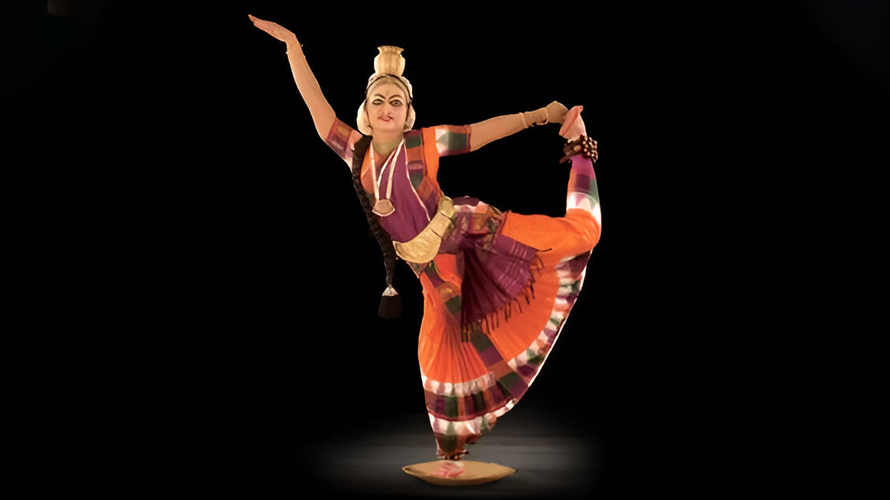India is home to a rich cultural heritage of classical dance forms, each with its own distinct style, expressions, and movements. Among them, Kuchipudi stands out for its fluidity, grace, and dramatic elements. While Bharatanatyam, Kathak, Odissi, and Mohiniyattam each possess unique characteristics, Kuchipudi’s postures and movements have a dynamic quality that sets it apart. In this Blog, Nrityangana explores the differences in postures between Kuchipudi and other major Indian classical dance forms, highlighting its rich heritage, intricate storytelling, and graceful yet powerful expressions.
Understanding Kuchipudi’s Unique Postures
Kuchipudi dance, which is of Andhra Pradesh origin, has its roots firmly established in Natya Shastra and was historically danced as dance dramas. The postures in Kuchipudi are unique in the sense that they are dynamic, combining graceful footwork with dramatic narration. As opposed to Bharatanatyam, which features rigid and clearly defined postures, Kuchipudi dancers frequently use fluidity in movement, giving the effortless and lyrical look.
Comparing Kuchipudi with Other Classical Dance Forms
1. Kuchipudi vs. Bharatanatyam

Bharatanatyam, which is a very old classical dance form, is characterized by its geometric precision and sculpturesque poses. Dancers take a deep araimandi (half-sitting posture), and movement is usually symmetrical and structured. Kuchipudi, on the contrary, consists of swift, rounded movements and lighter footwork, which makes it more theatrical in appeal. A good example is the legendary Tarangam, in which dancers balance on a brass plate, which is one feature that stands out in Kuchipudi.
2. Kuchipudi vs. Kathak
Kathak, the North Indian dance, focuses on intricate footwork and rapid pirouettes. The stance of Kathak is straight and flowing, concentrating on rapid changes and narration with rhythmic beats. Kuchipudi, although giving importance to narration, is more inclined towards expressive gestures (Abhinaya) with energy-filled postures and leaps that occur very seldom in Kathak.
3. Kuchipudi vs. Odissi

Odissi is known for its tribhanga (three-bend posture) and fluid torso movements. The dance movements in Odissi often mirror ancient temple sculptures with deep bends and curvaceous poses. While Kuchipudi dancers also employ expressive movements, their postures are more dynamic and less restrained compared to Odissi’s measured, slow-paced approach.
4. Kuchipudi vs. Mohiniyattam
Mohiniyattam, from Kerala, is a highly graceful and feminine dance form characterized by gentle, circular movements. The postures in Mohiniyattam maintain a swaying rhythm, unlike Kuchipudi’s energetic jumps and rapid shifts in movement. The hand gestures (mudras) and footwork in Kuchipudi are faster and more vibrant compared to the slow, lyrical grace of Mohiniyattam.
The Influence of Theatrical Elements in Kuchipudi Postures
One of the characteristics of Kuchipudi dance is that it is deeply rooted in theater and drama. Most of its poses have been borrowed from Yakshagana and Bhagavata Mela and are therefore very expressive and narrative in nature. The Sattwika Abhinaya, which is more focused on emotions and expressions, is an important element in the storytelling process of Kuchipudi, separating it from other classical dances, which have more structured and symmetrical poses.
Conclusion: The Versatile Beauty of Kuchipudi Postures
Every Indian classical dance form has its own tradition and distinctness, and Kuchipudi is not an exception. Kuchipudi postures are flowing, theatrical, and dynamic, infusing the dance with a lively temperament. Unlike the angular exactness of Bharatanatyam, the speedy turns of Kathak, the sculptural beauty of Odissi, or the lyrical flow of Mohiniyattam, Kuchipudi unites storytelling expression with agility and zestfulness. We at Nrityangana hail the beauty of Kuchipudi and its uniqueness in the universe of Indian classical dance.


